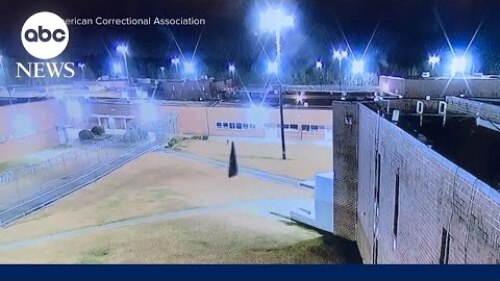By Luke Parker
Capital Gazette
BALTIMORE — Though Maryland’s prison system has worked to reinforce its facilities over the past two years, staffing shortages throughout the state are endangering inmates and employees, according to the correctional officers’ union.
“For all of their work and hiring, there’s still, every day, correctional officers retiring or leaving the job because it’s so dangerous and they can’t take it,” said Stuart Katzenberg, collective bargaining director for the American Federation of State, County and Municipal Employees, or AFSCME, Maryland Council 3.
Last year, the union released a report identifying the need for more than 3,400 additional officers to operate the state’s prisons effectively — a figure slightly greater than an independent analysis by a public safety consulting firm. Katzenberg said Friday that while the figure is now closer to 1,000 employees, more needs to be done.
Beyond violence, the correctional system is struggling to accommodate inmate needs. Without officers to secure different areas, vocational programs are shutting down while visitation, educational activities and recreational time have been affected, according to the AFSCME audit.
The problem, Katzenberg said, will likely worsen with projects already underway within the Maryland Department of Public Safety and Correctional Services, including a women’s prerelease center and the $1 billion Baltimore Therapeutic Treatment Center, which is expected to hold 800 beds.
“Understaffing leads to bad outcomes … it has a direct impact on the people being incarcerated and then it also has a direct impact on our members,” Katzenberg said.
To compensate for shortages, prison administrators regularly schedule overtime shifts for officers, something the union said makes a dangerous job even more dangerous. Across the state, corrections officers are being paid nearly $180 million per year in overtime, Katzenberg said, the equivalent of approximately 2,500 full-time positions.
Staff drafted for double shifts are struggling to keep up with their personal affairs and health, Katzenberg said, and exhaustion on the job could be something inmates “take advantage of.”
The bargaining director said the union is awaiting data from DPSCS officials documenting officer injuries.
Still, new criminal cases from prison encounters continue to proliferate.
Anne Arundel County public defender Anne Stewart-Hill said since the COVID-19 pandemic, she has noticed more and more assault and contraband cases coming out of the Jessup Correctional Institution. Even if a defendant lived in a different jurisdiction before their time in prison, because the facility is in Jessup, they would be eligible for a public defender only from Anne Arundel County.
On Tuesday, one of her clients serving time at the facility pleaded guilty to first-degree assault after attacking another inmate last year. The victim’s wounds did not require serious medical attention, she said, and they weren’t reported. It wasn’t until corrections officers noticed the inmate bleeding that they began to investigate, according to charging documents.
Three months after that incident, however, Nicholas Joseph Delfosse, 27, was stabbed and killed in his cell by his cellmate. Daniel Myers, 26, was sentenced to 50 years in prison earlier this month after pleading guilty to first-degree murder. A Silver Spring resident, Myers was convicted of assault in 2022 for an encounter at another correctional facility in Cumberland.
A recent study analyzed data on the number of COs and the number of prisoners in each state. Watch the video below to see which states have the most understaffed prisons.
“I’ve never seen so many cases in my career,” Stewart-Hill said.
Compared with former Gov. Larry Hogan, a Republican, Katzenberg said there is a “different vision” for the prison system under Gov. Wes Moore, a Democrat, who has publicly committed to filling vacancies across the state government.
According to a March 22 statement from DSPCS, from Jan. 18, 2023, to that point, the department hired 1,047 employees and reduced vacancies by 26% during the first year of Moore’s administration.
“While the Department recognizes that hiring remains a challenge in some regions of the state, it will continue to aggressively pursue opportunities to increase our workforce and support its dedicated and hard-working correctional officers every day, who are vital to the Department’s mission and success,” the department wrote.
—
©2024 Capital Gazette.
Visit at capitalgazette.com.
Distributed by Tribune Content Agency, LLC.





